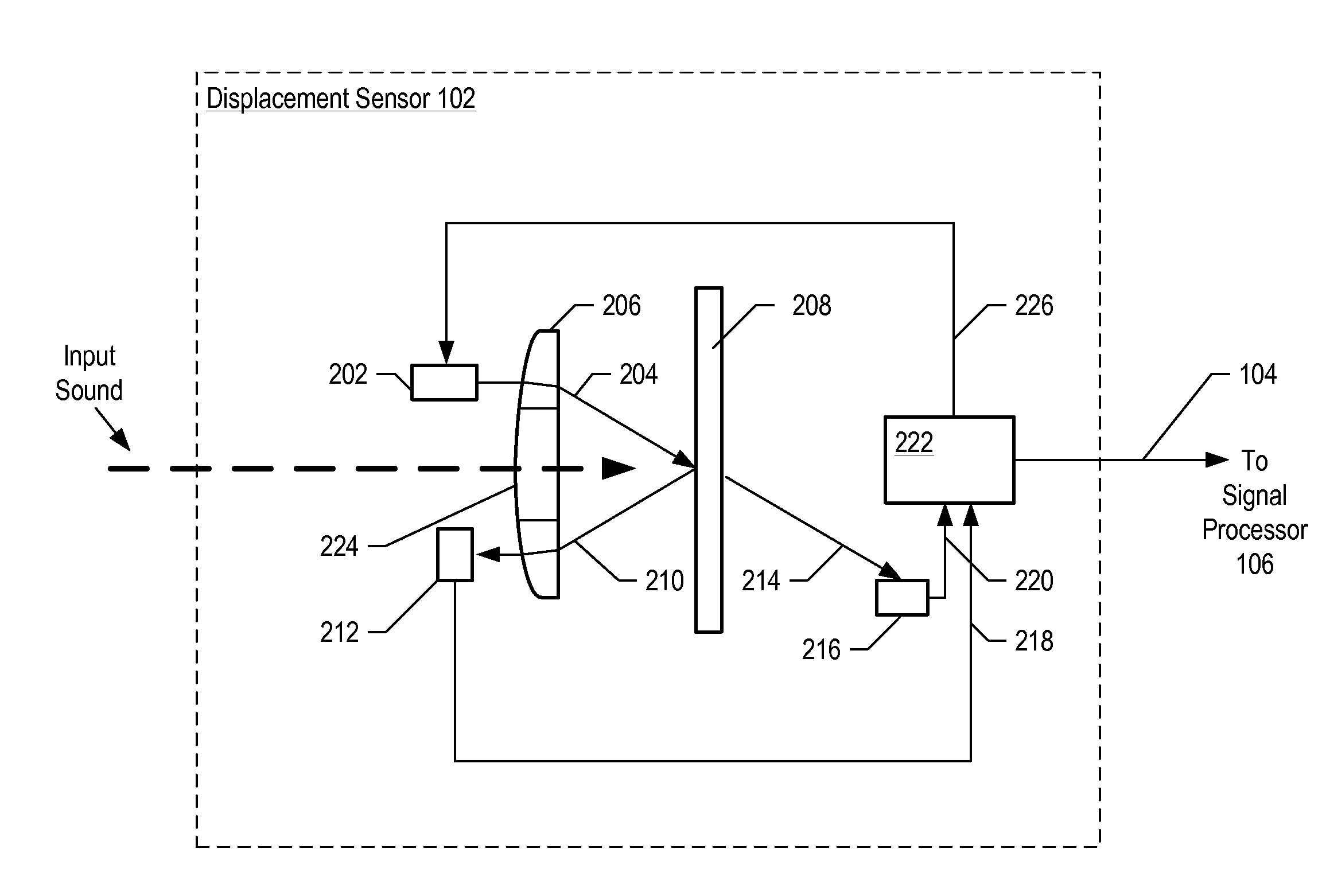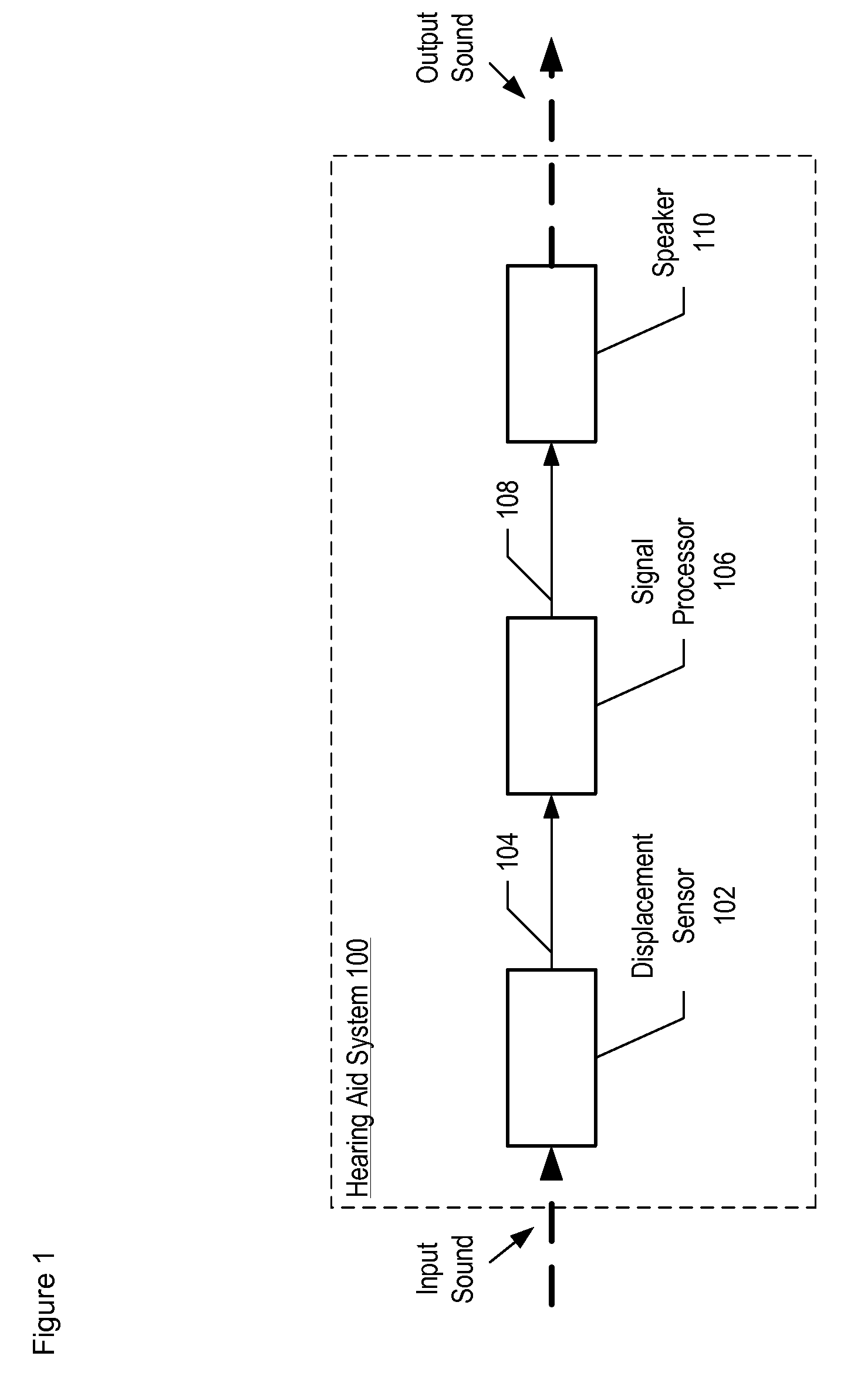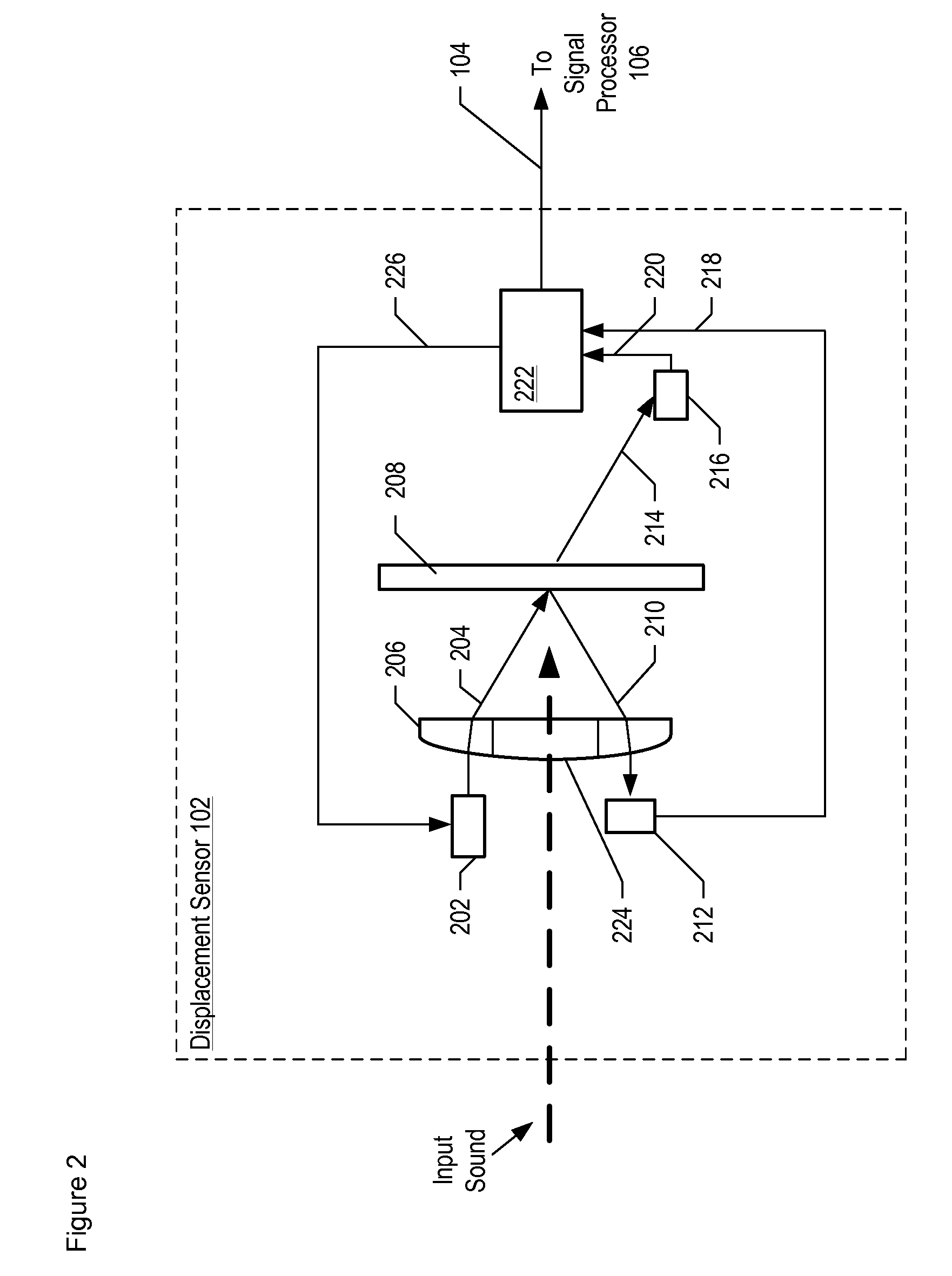Optical displacement sensor comprising a wavelength-tunable optical source
a technology of optical displacement sensor and wavelength-tunable optical source, which is applied in the field of displacement sensor, can solve the problems of increasing the resonant frequency, affecting the interferometer response, and increasing the cost and complexity of the microphon
- Summary
- Abstract
- Description
- Claims
- Application Information
AI Technical Summary
Benefits of technology
Problems solved by technology
Method used
Image
Examples
Embodiment Construction
[0033]Some embodiments of the present invention incorporate subject matter disclosed in U.S. patent application Ser. No. 11 / 366,730, which is incorporated by reference herein.
[0034]The following terms are defined for use in this Specification, including the appended claims:[0035]Fabry-Perot etalon means an optically-resonant cavity formed by two substantially parallel and substantially flat surfaces that are separated by a cavity length, wherein the cavity length is fixed.[0036]Fabry-Perot interferometer means an optically-resonant cavity formed by two substantially parallel and substantially flat surfaces that are separated by a cavity length, wherein the cavity length is not fixed. Examples include arrangements of plates wherein the cavity length is controllably-varied using an actuator, as well as arrangements wherein the cavity length can vary in response to a stimulus, such as incident acoustic energy.[0037]Cavity length means the instantaneous separation between two surfaces t...
PUM
| Property | Measurement | Unit |
|---|---|---|
| frequency | aaaaa | aaaaa |
| voltage | aaaaa | aaaaa |
| spectral-width | aaaaa | aaaaa |
Abstract
Description
Claims
Application Information
 Login to View More
Login to View More - R&D
- Intellectual Property
- Life Sciences
- Materials
- Tech Scout
- Unparalleled Data Quality
- Higher Quality Content
- 60% Fewer Hallucinations
Browse by: Latest US Patents, China's latest patents, Technical Efficacy Thesaurus, Application Domain, Technology Topic, Popular Technical Reports.
© 2025 PatSnap. All rights reserved.Legal|Privacy policy|Modern Slavery Act Transparency Statement|Sitemap|About US| Contact US: help@patsnap.com



